We got a hold of a nice little golden iPollo V1 Mini Ethash/ETChash ASIC miner and decided to play around with it to see why so many people like these small home-oriented high-hashrate and low-power ASIC miners with support for the Ethash and ETChash algorithms. You might be able to score a good deal on used iPollo V1 Mini now that these devices are not that profitable like they were during the time when you could mine Ethereum (ETH) with them and they can still come in handy in the next bull run or meanwhile if you mine some Ethash or ETChash coins meanwhile. The nicest thing is that they are very compact, not that noisy in general and very power efficient compared to what a GPU mining rig would use to give you the same hashpower. And they do come with WiFi adapter built-in, so once you set them up they are easy to move around the house or apartment as you would only need to plug them in a power socket in order for them to start hashing, no need to use network cables, although you can still if you want to.
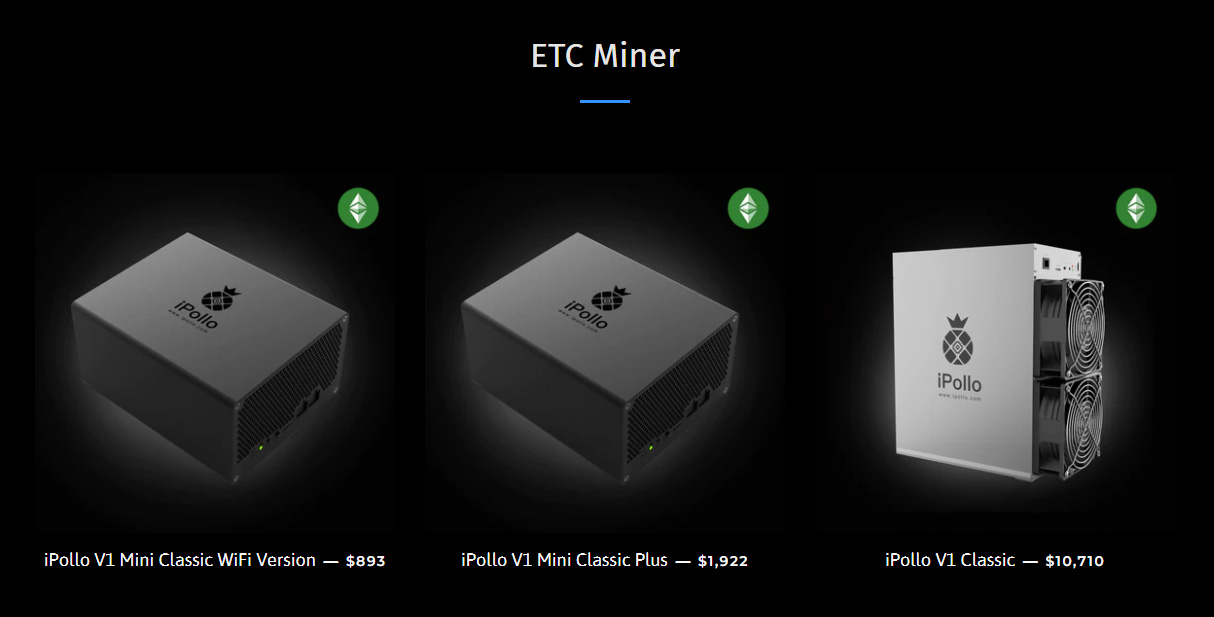
Now, let us start with a little clarification as iPollo does offer two sets of V1 ASIC miners, one is described as ETC Miners and have the word Classic in their product names. These are iPollo V1 Mini Classic (130 MH/s at 104W) and iPollo V1 Mini Classic Plus (280 MH/s at 270W) with both devices having a design memory of 3.75 GB out of which the available memory for use is 3.6 GB. This means that these devices can mine Ethash or ETChash coins that have up to a 3.6 GB DAG size. There is also the iPollo V1 Classic (1550 MH/s at 1240W) with the same memory limitation available, but that one is big and noisy and not very suitable for home mining anyway.

The other ETH Miner category is similar in terms of hashrate and power usage or more efficient, but these devices do come with more memory available. The design memory is 6.0 GB of which the available memory for DAGs is 5.8 GB, meaning that you can mine even Ethereum (ETH) forks such as ETHF or ETHW that have DAG size of over 5GB already. Ethereum of course is no longer available for mining since it has switched from PoW to PoS. But if you get the iPollo V1 Mini (300 MH/s at 240W), the model we are looking at and testing here, or the more efficient iPollo V1 Mini SE Plus (400 MH/s at 232W) or the smaller iPollo V1 Mini SE (200 MH/s at 116W) you should be safer on the longer term on what you would be able to mine many more Ethash or Etchash coins passing the 4GB DAG size in the near future. There is also the iPollo V1 (3600 MH/s at 3100W), but just like the similar Classic counterpart this one is big, noisy and quite expensive for the regular home miners anyway.
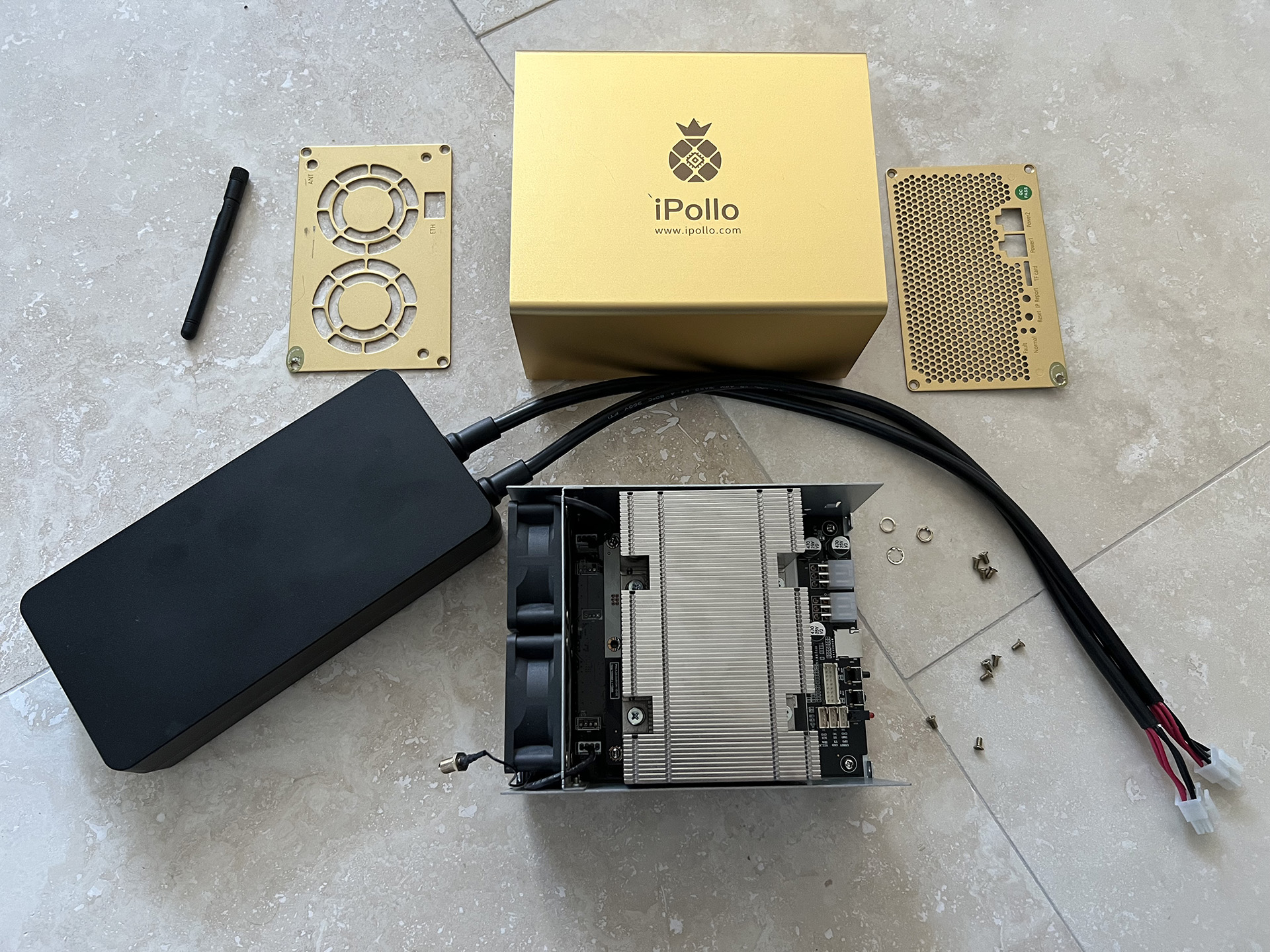
As you probably already guessed, after checking that the device works fine, we opened it up. The iPollo V1 Mini ASIC miner is quite compact and comes with an external 12V power supply with a maximum rating of 360W (2 lines rated at 180W each) with two 6-pin PCI-E power connectors coming out of this passive Huntkey PSU. You need to plug in the two 12V power lines into the miner that has a power usage of 240W and that should be fine for the wires and the miner. The 6-pin PCI-E power connectors are normally rated at 75W, but good quality ones are able to handle 100W or more usually. There could be problems however if you try to use a 6-pin PCI-E power connector for a 150W or more as it usually starts to overheat and burns up due to being significantly overloaded.
The power supply is quite good, although it gets hot when mining it is very efficient and provides stable power to the miner. The power usage we have measured with the stock power supply is around 50W for the miner while getting ready to mine and around 244W at the wall when mining begins. Connecting a 1000W Platinum rated Corsair power supply resulted in 249W of power usage while mining (4-5W more due to the extra 5V line power consumption the Corsair has).
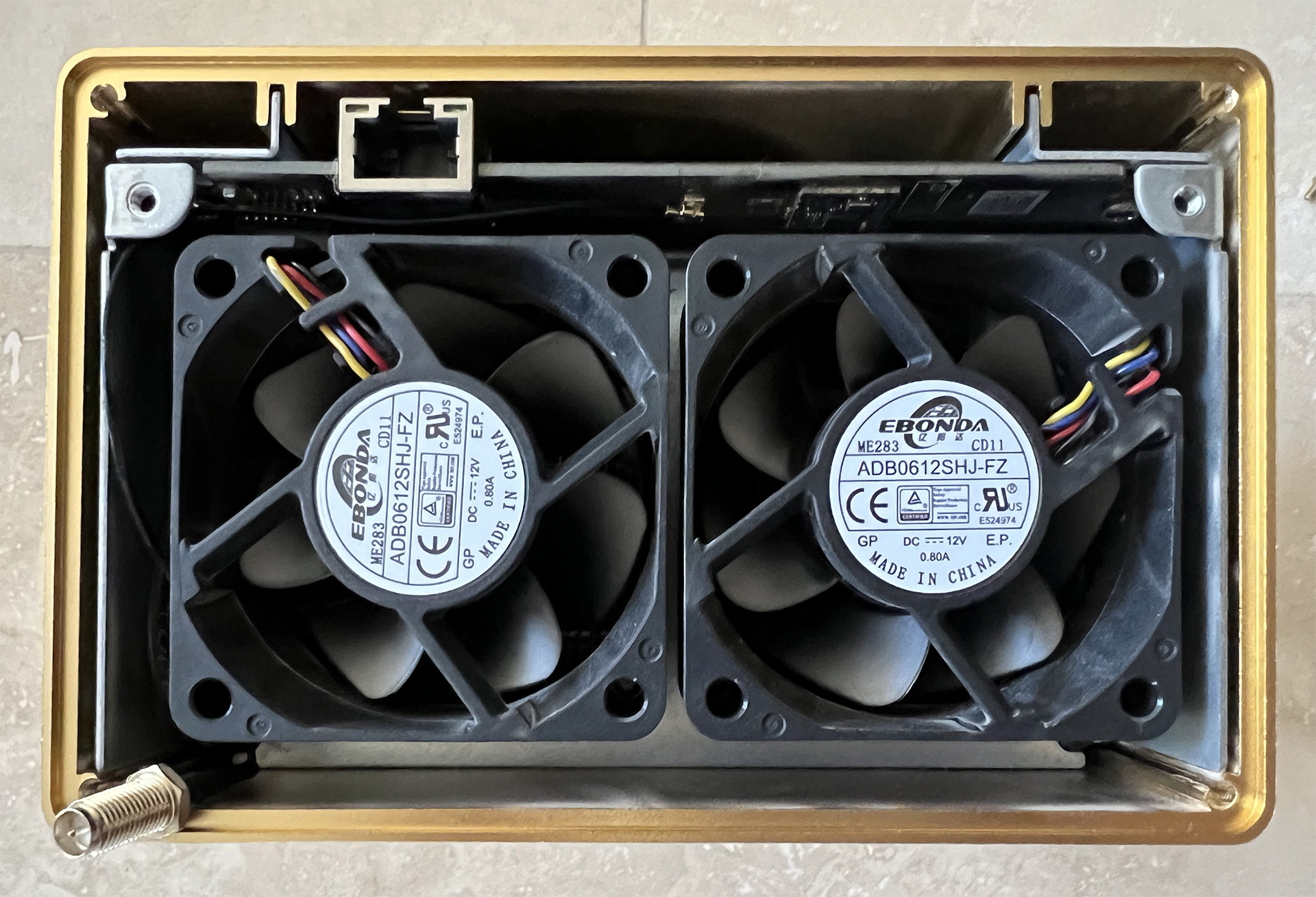
Due to the compact size of the miner the manufacturer Nano Labs has decided that they could use two small 60mm size fans with high-rpm to provide the cooling for the miner. And while these fans do their job very well, at maximum RPM they are quite noisy (around 7000 rpm), though with the fan control and normal operation they go down to a sub 5000 rpm and the noise is much more acceptable. With the maximum speed of the two cooling fans you are going to be getting around 64 dBA noise level while with them running normally with the miner operating at around 50 degrees Celsius and the fans at around 4800 rpm the noise level measured is around 52 dBA and that is much more acceptable, though still not very silent. The two fans used are from a Chinese manufacturer called Ebonda and are rated at 0.8A at 12V. We are of course going to try and optimize the cooling and see if this miner can be made more silent, but that will follow in another post.
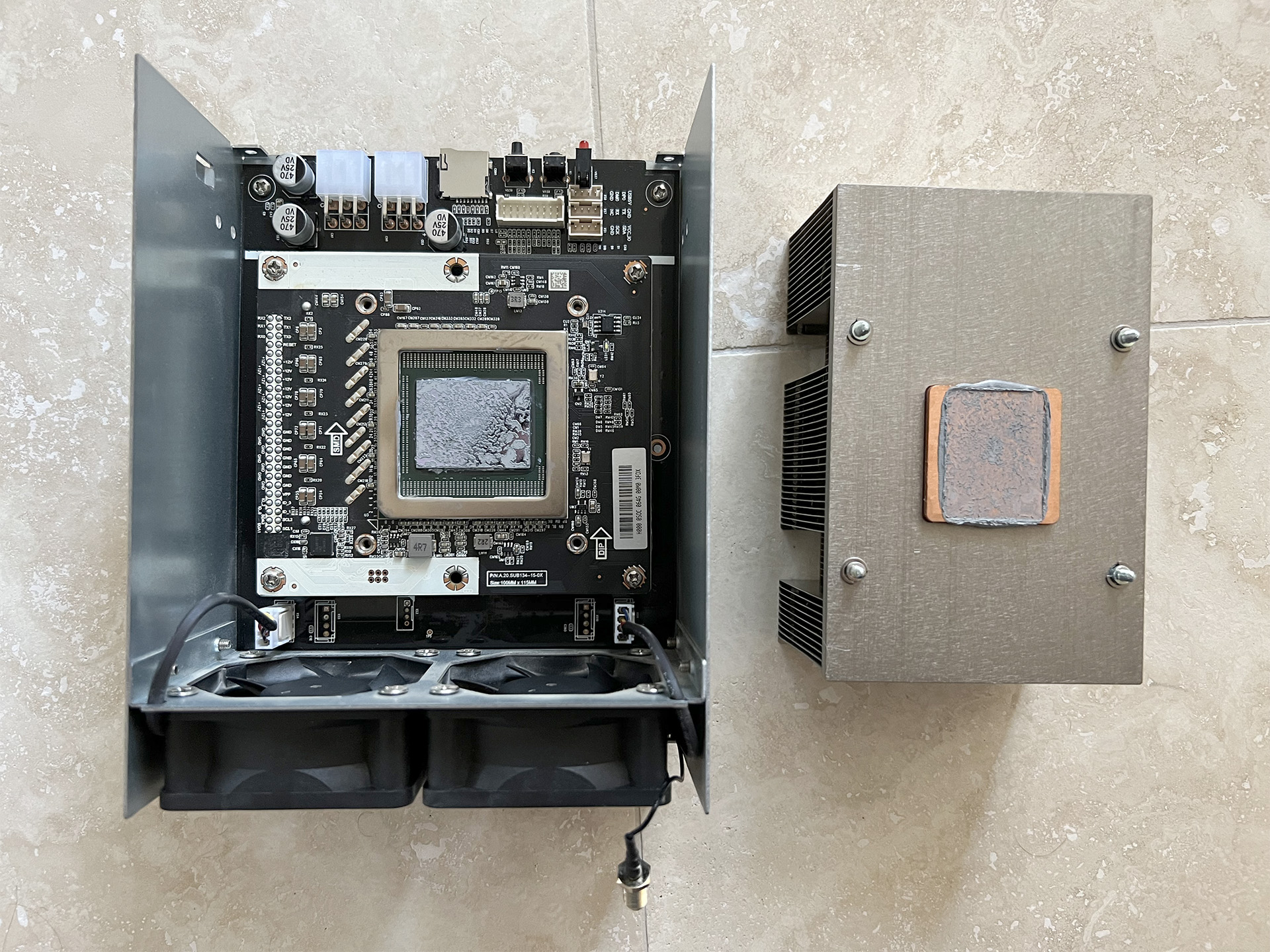
The cooler of the miner is a large aluminium copper block that seems like a server type heatsink, but does not seem to be a standard sized one… the mounting hole distance, the protruding copper block and not centred placement of the screws make it seem like a custom design. Would’ve been nice if you could just mount a good tower-based CPU cooler to make cooling easier and less noisy, but that would not be an easy task – certainly not as easy as juts replacing the heatsink and fans. The miner itself consists of two boards with a pin header connection between them. The bottom one is the control and power board and the top one is the hashing board with a single large ASIC chip. BTW after disassembling the miner with replaced thermal compound using Arctic MX4 thermal grease we’ve seen about 1 degree Celsius drop in the operating temperature of the miner.
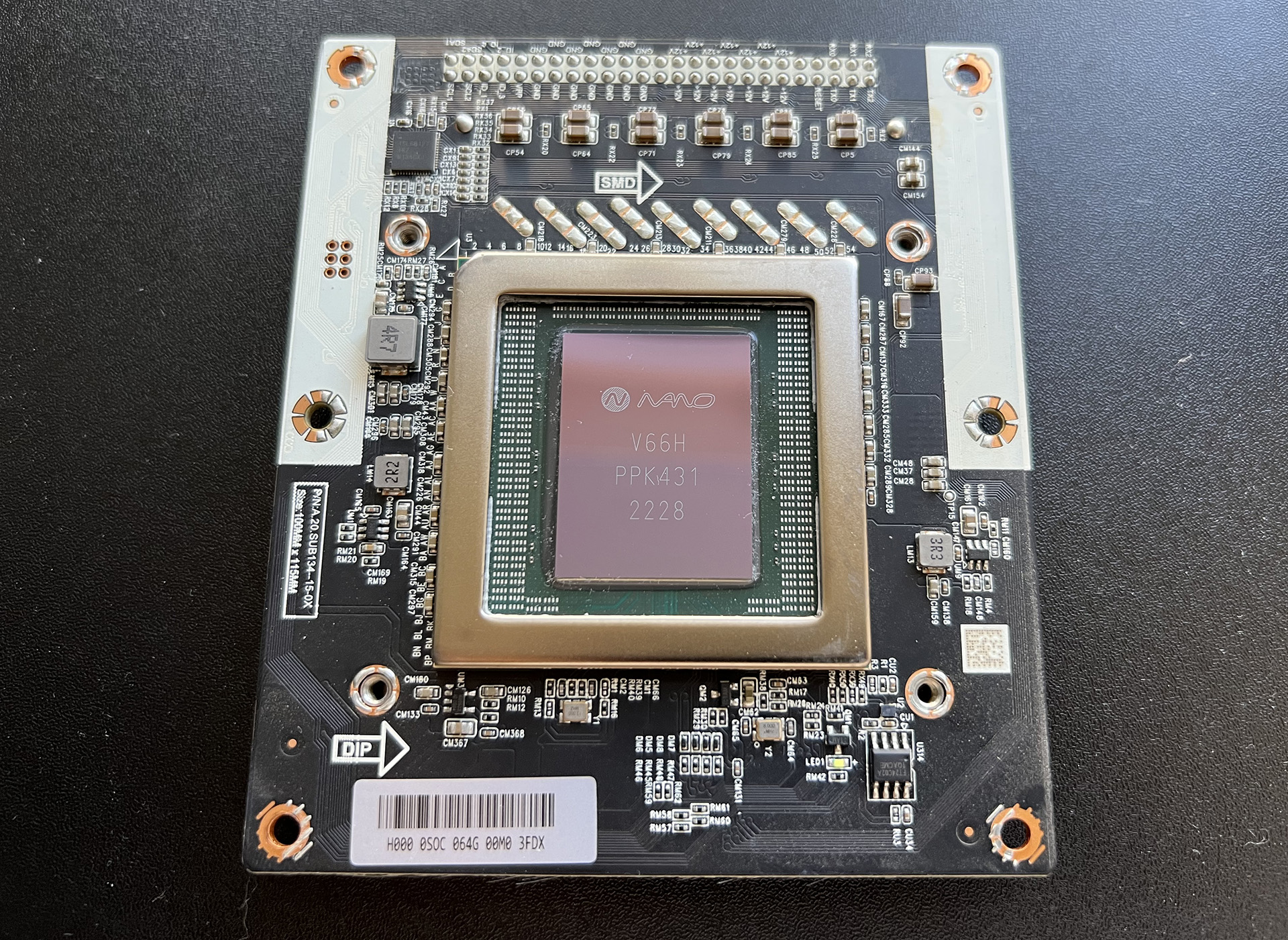
The Nano Labs V66H ASIC single chip is apparently capable of 300 MH/s Ethash/ETChash hashrate with a power usage of around 200-ish Watts of power usage, no exact specs of the chips. These are easy to scale with big hashrate miners if you just increase the chip count. Though apparently efficiency could be further improved judging by the specs of the Mini SE and Mini SE Plus miners that provide even better power efficiency. Nano Labs’s iPollo Ethash/ETChash ASIC chips might not be the most power efficient in the bunch, but they do seem to perform quite competitively and the 6GB of memory is a plus as well. Not to mention that these miners do come with support for dual-mining with ZIL, so a little extra profit added by that as well, a profit that may allow the devices to successfully compete with higher hashrate products with lower power usage such as Jasminer X4.
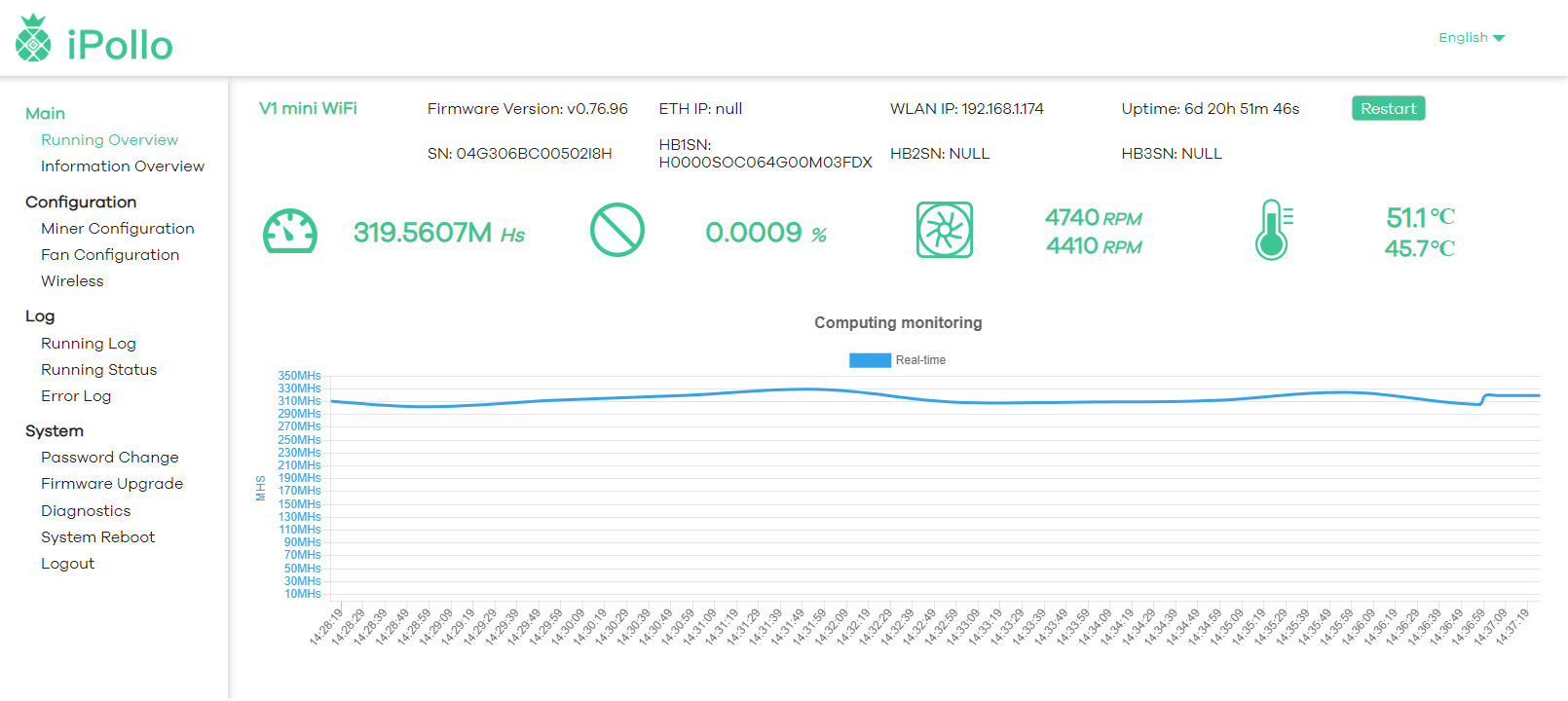
The iPollo V1 Mini ASIC miner comes with a simple and easy to use web-based interface for monitoring and control of the device, there is also the iPolloTool software for Windows that allows for easier setting up and monitoring of multiple miners at once. The average reported hashrate we are seeing for the iPollo V1 Mini is around 300 MH/s with an operating temperature at around 50 degrees and fans at around 4800 rpm. At 244 Watts of power used and with 52 dBA noise. So, the claimed specifications are pretty much what you should expect to get in real usage.
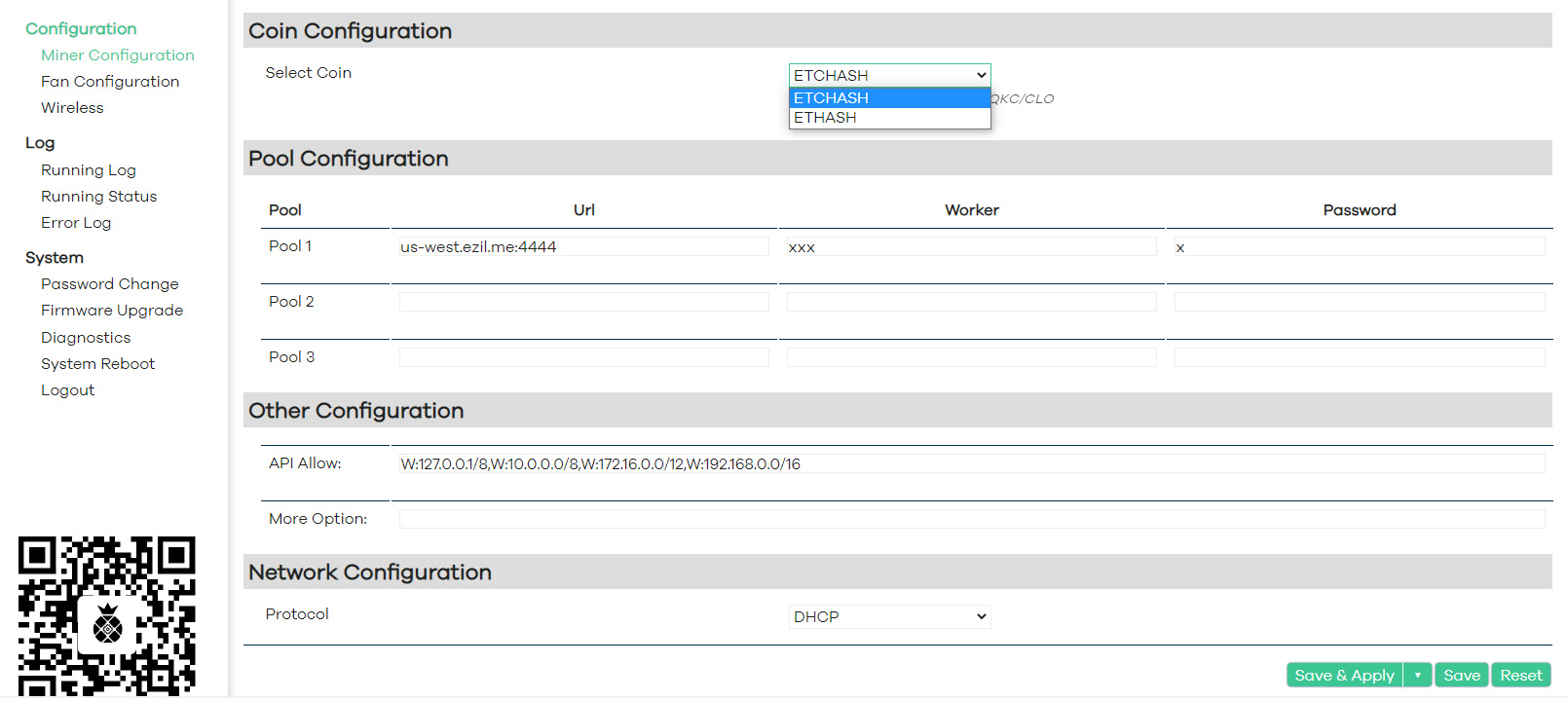
The miner supports both ETChash and Ethash mining and dual-mining with ZIL as well. There is however a catch with the dual mining support, the latest dual-mining firmware is not yet available on the official firmware upgrade package yet, but you can download firmware version 0.76.96 from RabidMining. There does not seem to be support for Nicehash mining on the iPollo however, The 6GB memory onboard allows for a decent future-proof capability of the device (be careful with the 4GB models!). It takes about 4 minutes for the miner to get ready to mine ETC once you boot it up, so quite quick on that front compared to Jasminer X4 where you will need to wait about 20 minutes.
There is a user fan control option available with both manual and automatic modes available for the user to configure. And there is also a Wireless network setup in the web-interface that you need to use to connect your device to a WiFi network. The first time you run it needs to be connected with a network cable so that you can setup the Wifi, after that it will just connect to the wireless network you set it up to use automatically. There is unfortunately no control for operating frequency or voltage available, so no user options available for trying to optimize the device for better power efficiency or faster hashrate for example. The available logs in the web interface are not very usable as although there are three different logs available for you to monitor through the web interface neither one of them is the cgminer output for the actual mining process (the device uses a modified cgminer as mining software).
So, all in all, the iPollo V1 Mini Ethash/ETChash ASIC miner is a nice compact home miner for anyone interested, it works well, pretty versatile and performs as expected… there is of course more functionality to be deisred, so room for further imporvement. If you are looking to get one of these look for some sub $1000 USD deals.
 cryptomining-blog.com
cryptomining-blog.com